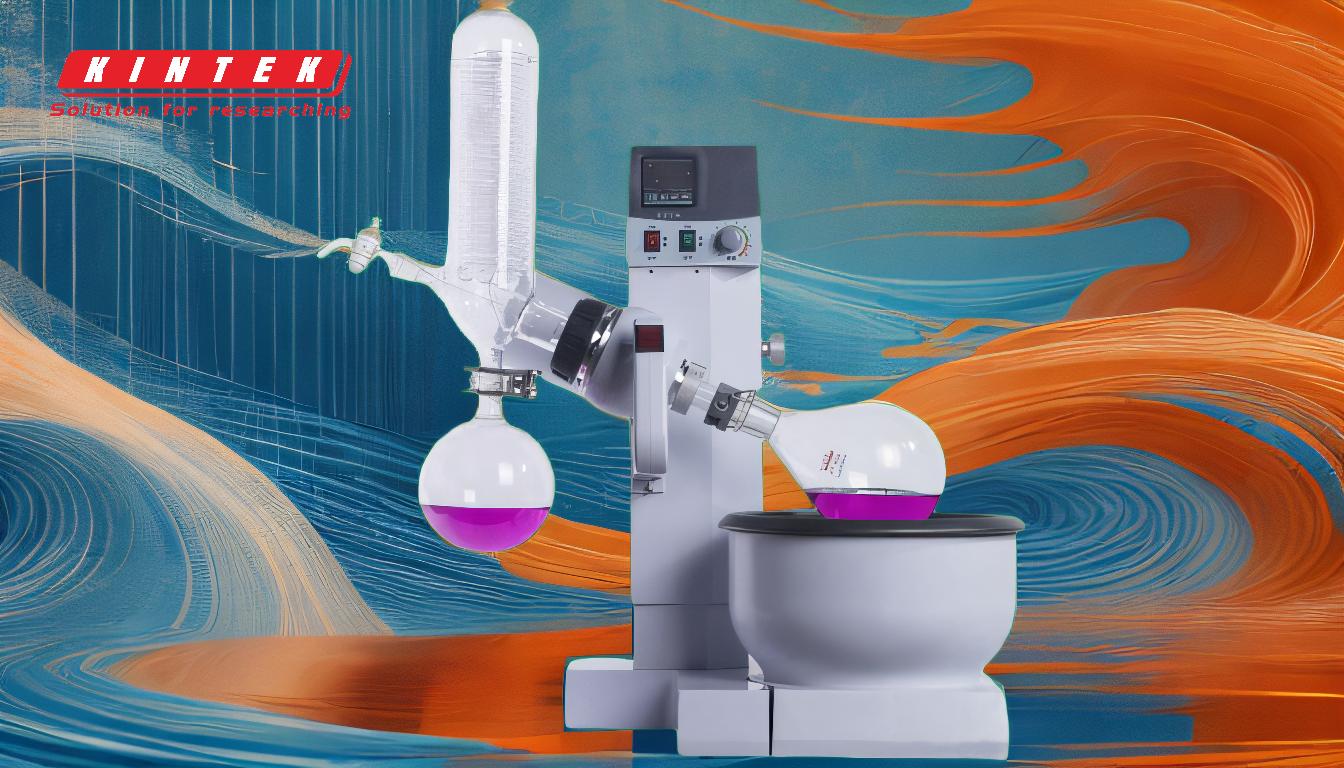The time it takes to complete a rotovap (rotary evaporator) process depends on several factors, including the volume of the solution, the boiling point of the solvent, the efficiency of the vacuum pump, the temperature of the water bath, and the desired level of concentration or separation. Typically, the process can take anywhere from 30 minutes to several hours. The key steps involve setting up the system, creating a vacuum, rotating the flask to increase evaporation, condensing the solvent, and collecting the distillate. The process concludes by stopping the rotation, turning off the heat and vacuum, and releasing the vacuum to safely remove the flask.
Key Points Explained:

-
Volume of the Solution
- Larger volumes of solution will naturally take longer to evaporate compared to smaller volumes. The surface area exposed to the vacuum and heat plays a significant role in determining the evaporation rate.
- For example, a 500 mL solution will take significantly longer to process than a 100 mL solution under the same conditions.
-
Boiling Point of the Solvent
- The boiling point of the solvent under reduced pressure (vacuum) is a critical factor. Lower boiling points mean faster evaporation.
- Solvents with high boiling points under normal conditions (e.g., water) will evaporate more slowly, even under vacuum, compared to low-boiling solvents (e.g., ethanol or acetone).
-
Efficiency of the Vacuum Pump
- A high-quality vacuum pump capable of achieving a strong vacuum will reduce the boiling point of the solvent more effectively, speeding up the evaporation process.
- If the vacuum pump is less efficient, the process will take longer as the solvent may not evaporate as quickly.
-
Temperature of the Water Bath
- The temperature of the water bath or heating source directly impacts the rate of evaporation. Higher temperatures will speed up the process, but care must be taken to avoid boiling the solution violently, which could lead to loss of sample or contamination.
- Optimal temperature settings depend on the solvent and the desired outcome.
-
Rotation Speed of the Flask
- Rotating the flask increases the surface area of the solution exposed to the vacuum and heat, promoting faster evaporation.
- A slower rotation speed may result in a longer processing time, while faster rotation can enhance efficiency.
-
Desired Level of Concentration or Separation
- If the goal is to concentrate the solution to a small volume or achieve complete solvent removal, the process will take longer compared to partial concentration.
- The endpoint of the process is determined by the user, and achieving higher levels of concentration or purity may require additional time.
-
System Setup and Shutdown
- The initial setup, including preparing the water bath, attaching the flask, and creating a vacuum, can take 10–15 minutes.
- The shutdown process, which involves stopping rotation, turning off the heat and vacuum, and releasing the vacuum, adds another 5–10 minutes to the total time.
-
Condenser Efficiency
- The condenser must effectively cool the evaporated solvent to ensure it is collected in the receiving flask. If the condenser is not functioning optimally, the process may slow down or require additional time to achieve the desired result.
-
Operator Experience
- An experienced operator can optimize the process by adjusting parameters such as rotation speed, vacuum strength, and water bath temperature, potentially reducing the overall time required.
- Inexperienced users may take longer to set up and monitor the process effectively.
-
Environmental Factors
- Ambient temperature and humidity can influence the evaporation rate. Higher ambient temperatures may slightly speed up the process, while high humidity could slow it down.
In summary, the time required for a rotovap process is highly variable and depends on the specific conditions and goals of the experiment. By optimizing factors such as vacuum strength, temperature, and rotation speed, users can achieve faster and more efficient evaporation. However, it is essential to balance speed with precision to avoid compromising the quality of the final product.
Summary Table:
| Factor | Impact on Rotovap Process Time |
|---|---|
| Volume of Solution | Larger volumes take longer to evaporate due to increased surface area exposure. |
| Boiling Point of Solvent | Lower boiling points under vacuum lead to faster evaporation. |
| Vacuum Pump Efficiency | Stronger vacuums reduce boiling points, speeding up the process. |
| Water Bath Temperature | Higher temperatures increase evaporation rates but must be carefully controlled. |
| Rotation Speed | Faster rotation speeds enhance evaporation by increasing surface area exposure. |
| Desired Concentration | Complete solvent removal or high concentration requires more time. |
| System Setup/Shutdown | Setup and shutdown add 15–25 minutes to the total process time. |
| Condenser Efficiency | Efficient condensers ensure faster solvent collection and reduce delays. |
| Operator Experience | Experienced users optimize parameters to reduce overall processing time. |
| Environmental Factors | Higher ambient temperatures speed up evaporation, while humidity can slow it down. |
Need help optimizing your rotovap process? Contact our experts today for personalized advice!












